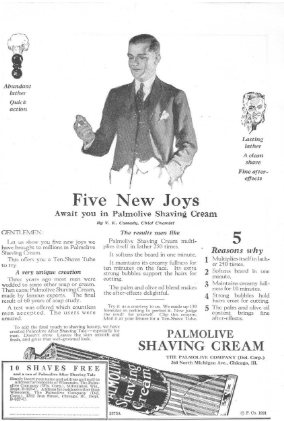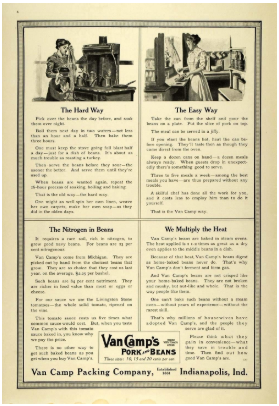
How to Use Your Customer’s Voice
Knowing what makes your business different from competition will guide you on how to point out your strengths and why you are better.
Day 6: Claude Hopkins. Who’s he?
It’s time to get to know your customer. And to do this, you’re going to need to learn about Claude Hopkins.
Hopkins was a world-class advertiser who believed in customer research, and whose results spoke volumes.
In his 1923 book “Scientific Advertising”, Hopkins said:
“Human nature is perpetual. In most respects it is the same today as in the time of Caesar. So the principles of psychology are fixed and enduring.”
Let’s face it — whether you’re a caveman or a supermodel, the human mind is a fairly predictable thing. We all have desires, fears and beliefs. We need food, sleep, shelter and love to thrive. And we all want to be understood.
It’s time for you to understand your customer.

And that that means more customer research.
In the next couple of posts we’ll find out all there is to know about your ideal customer, even if you don’t know them yet.
Before we do that, let’s look at a few examples of how Mr Hopkins used research to win the hearts, minds and wallets of his audience.
Understand what your customers really want

Hopkins was tasked with the seemingly impossible job of writing ad copy for Palmolive Shaving Cream.
Why was it the impossible job? Because their shaving cream wasn’t special.
Meanwhile, most men (Palmolive’s target market) were already loyal to the brands they were using, and they didn’t have any reason to switch to a competitor.
Hopkins embraced the challenge. He buried himself in research, studying the audience’s behaviour. He found one thing in particular. Men looked for three things from a shaving cream: lots of lather, lather that lasted forever, and quick action.
He showed Palmolive his findings and set them a challenge — upgrade your product to match what your customers want.
The campaign was a barnstorming success. Hopkins understood that user’s needs preceded the product, so he ensured Palmolive shaving cream offered what men were looking for.

Learn who your competition is — and obliterate them
When asked to sell Van Camp’s factory-baked Pork and Beans, Hopkins faced a different challenge.
Again the product didn’t seem to have an apparent advantage. Even worse, Hopkins found, just 4% of house-wives (the target market) were using factory-baked pork and beans. That means 96% of the house-wife market was seemingly untouchable.
Not for Hopkins.
His research showed him one thing above all else — cooking beans at home was inconvenient.
So he made things really simple. He wrote ads about the benefits of factory-baked beans. Portion sizes, ease of use, lack of effort required to cook ’em — you name it.
The campaign was another major success for two main reasons: the first was that the benefits Hopkins identified were real and added value to consumers.
The second was that his ad was the polar opposite of the competitions’ own advertisements, which were all variations of the tried and tested “We’re number 1. We’re the best. Buy this. You’ll love it” nonsense.
He used a simple comparison ad to point out the winner (Van Camp):

And he destroyed the competition. Good job, Claude.
Find the best way to sell a new product
This campaign was another partnership between Hopkins and Palmolive. This time, it was to sell a new women’s toilet soap.
Once again, Hopkins turned to research to find his golden copy. And this time, he focused on what other ads were saying.
It was pretty clear that the market was preying on women’s fears to make sales. Women were being forced to focus on their imperfections, wrinkles and lack of self-confidence. Hopkins rightly concluded this was a horrible way to treat consumers.
So he turned the ads on their heads and started with a basic premise: make women feel beautiful again.

Claude Hopkins was a pioneer, but his methods were incredibly simple. If you spent some time trying to be a bit more like him, you’d be well on the way to selling your product perfectly. Which brings us onto your homework.
Your homework
Today’s homework is about self-reflection.
Open your business’ homepage and a new Google Doc, and answer these questions:
- On a scale of 1-10, how customer-research based is my headline?
- Has my business adequately researched my target market’s main pain point/motivation? If not, why not?
- What question could I ask my target market to better understand their needs?
- How might I improve my homepage based on customer research?
